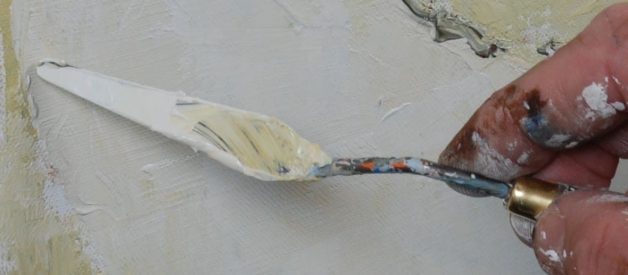I?ve been going to a lot of interesting workshops off late and one of them was ?Palette Knife Painting?. I?ve wanted to attend this workshop for a while and thought I would have to head all the way to Bangalore to learn this art form, but voila!, I got an opportunity in Chennai at the ?Sandhya Manne? Art Center! So to know more about Palette Knife Painting the most important aspects are the tools used and the kind of objects or scenery which would look best while working with the tool.
Tools used for Knife Painting:
A palette knife is a blunt tool used for mixing or applying paint, with a flexible steel blade. It is primarily used for mixing paint colors, paste, etc., or for marbling, decorative endpapers, etc. The ?palette? in the name is a reference to an artist?s palette which is used for mixing oil paint and acrylic paints.
Art knives come primarily in two types ( this might sound complex but you can have a look at the picture below for a better idea ):
- palette knife resembling a putty knife with a rounded tip, suited for mixing paints on the palette;
- painting knife with a pointed tip, lowered or ?cranked? like a trowel, suited for painting on canvas.
While palette knives are manufactured without sharpened cutting edges, with prolonged use they may become ?sharpened? by the action of abrasive pigments such as earth colors.
Palette knives are also used in cooking, where their flexibility allows them to easily slide underneath pastries or other items.
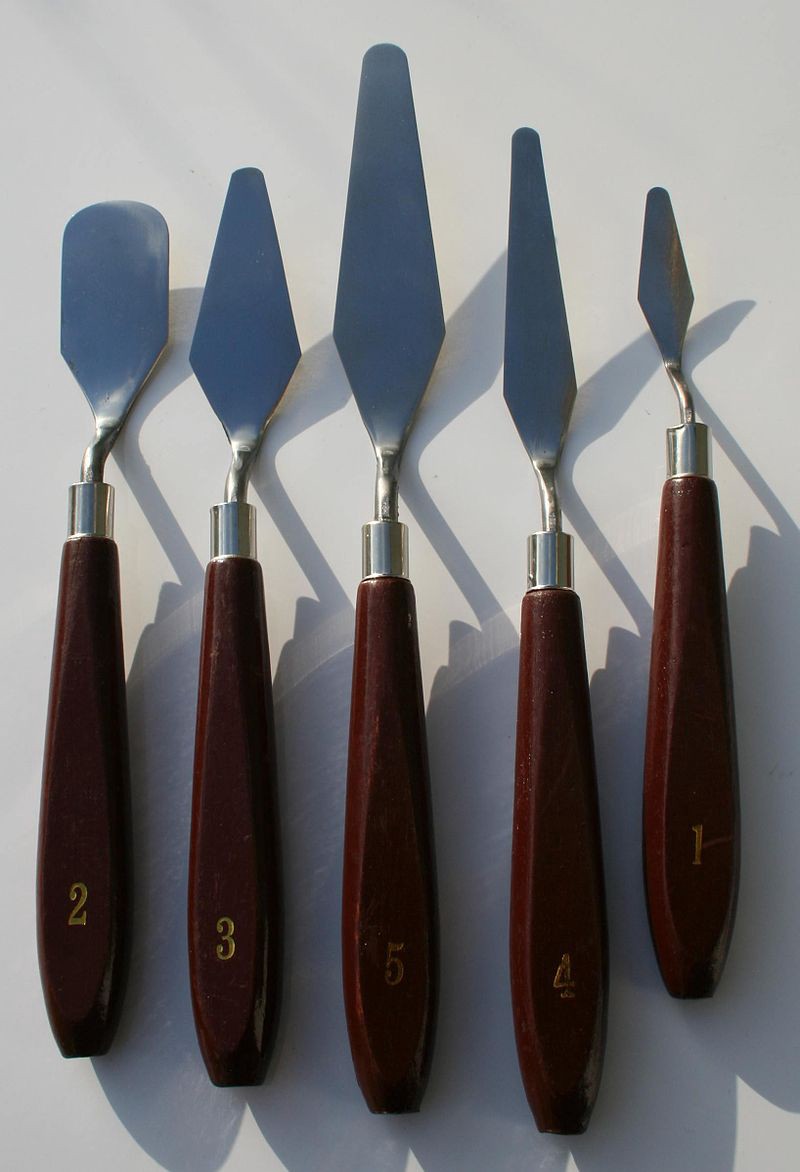 Knife options
Knife options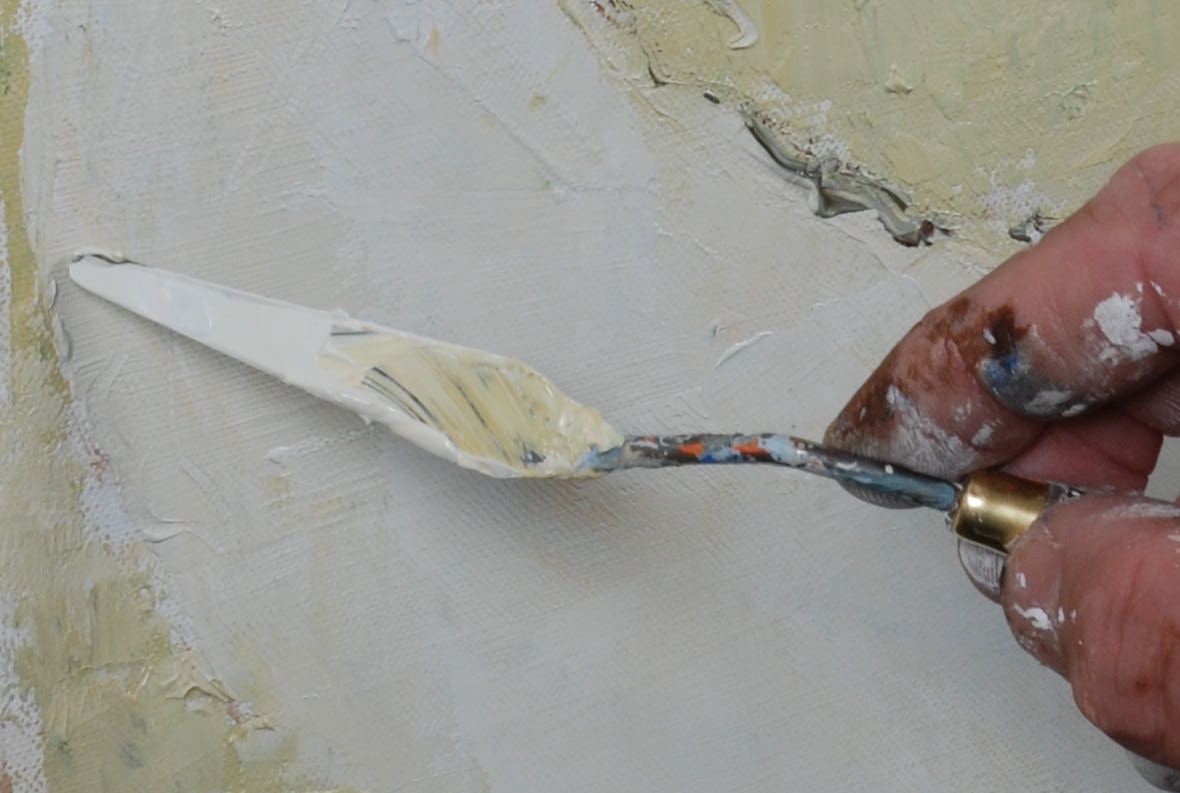 Painting with the knife
Painting with the knife
History of the Palette Knife :
Palette knives used for applying paint has a relatively recent history, as until the 19th century, these tools were primarily just for mixing paint on the palette. A few artists here and there, including Rembrandt and Francisco Goya, used palette knives in addition to brushes and other tools to create a nice effect, but it wasn?t really until the 19th century when Gustave Courbet started using them to thickly and smoothly apply paint on his landscapes that the technique began to really grow in popularity. Other well known artists who used palette knives for painting include Camille Pissarro (a student of Courbet), Paul Cezanne, Marc Chagall, and Henri Matisse. Many of these artists used palette knives in addition to brushes and other painting tools. It was in the 20th century, however, that more artists began to experiment with painting an artwork entirely using palette knives. Many artists today who use palette knives dabble in a bit of both methods!
(Left to right) Gustave Courbet, ?The Wave?; Francisco Goya, ?Two Old Men Eating Soup?; Henri Matisse, ?Odalisque with a Tambourine?; Paul Cezanne, ?Uncle Dominique?
Why use a palette knife?
Personally I love using the knife considering the large amount of paint you can dab onto the canvas. The spreading of the paint using the knife gives a chalky and less smooth effect. So when different shades of color are used one over the other, the ability to show fragmented depth and make the painting pop is greater while using a knife.
Knife painting is also very effective when a lot of texture is required while painting. For example, while painting frothy sea waves, clouds, bark of a tree, coconut tree leaves, brick walls, animal feathers, etc, using a palette knife is a great idea!
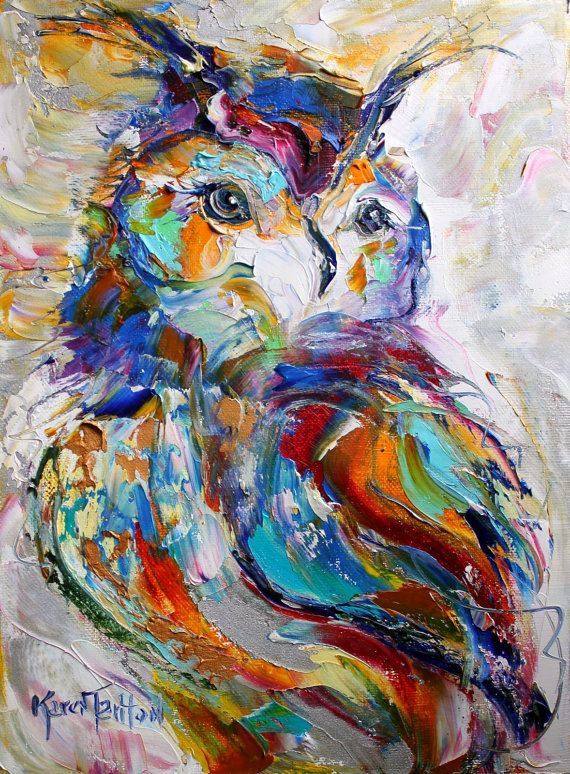 Rainbow Owl
Rainbow Owl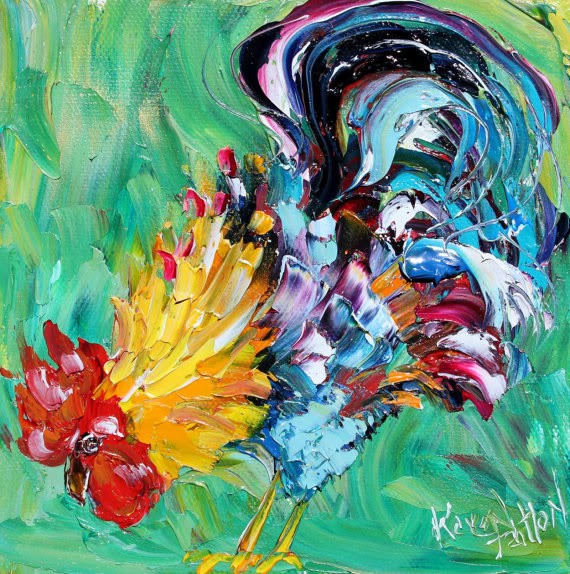 Curious Rooster
Curious Rooster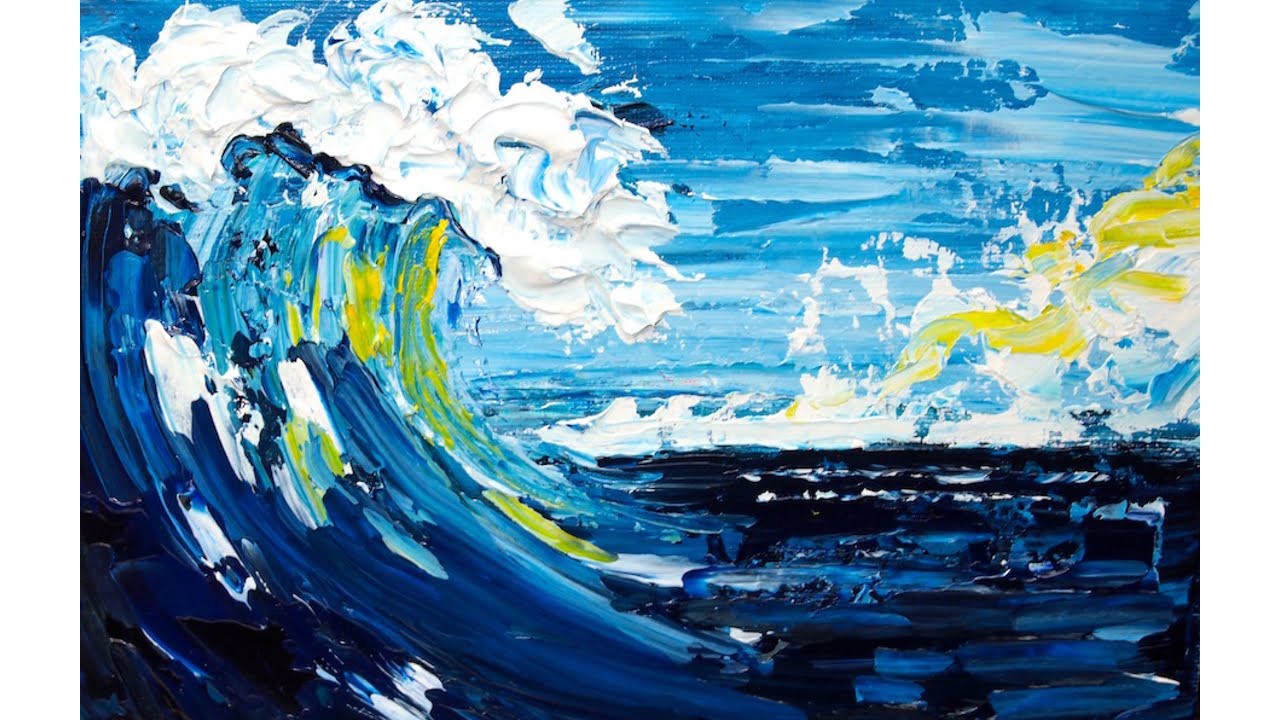 Along The Shore
Along The Shore
Knife painting in floral art:
Knife painting is also very effective while depicting flowers. The texture of the petals is brought out using the knife. The petals tend to protrude from the canvas and create a very endearing effect.
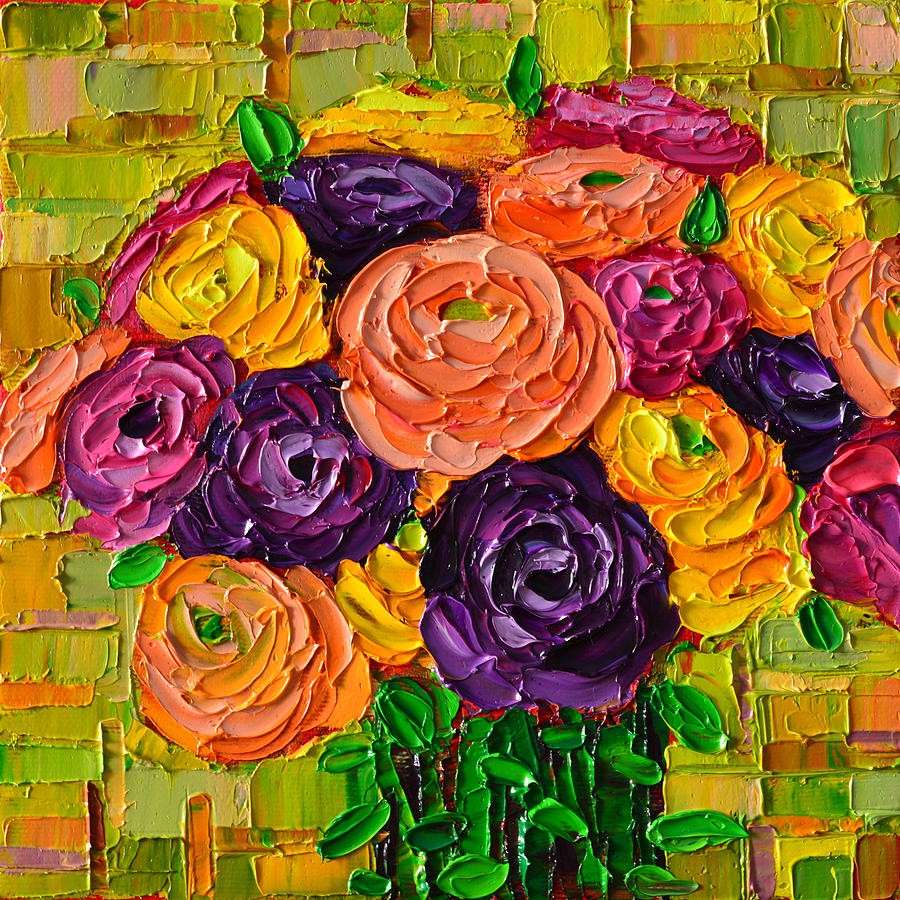 Rose bunch
Rose bunch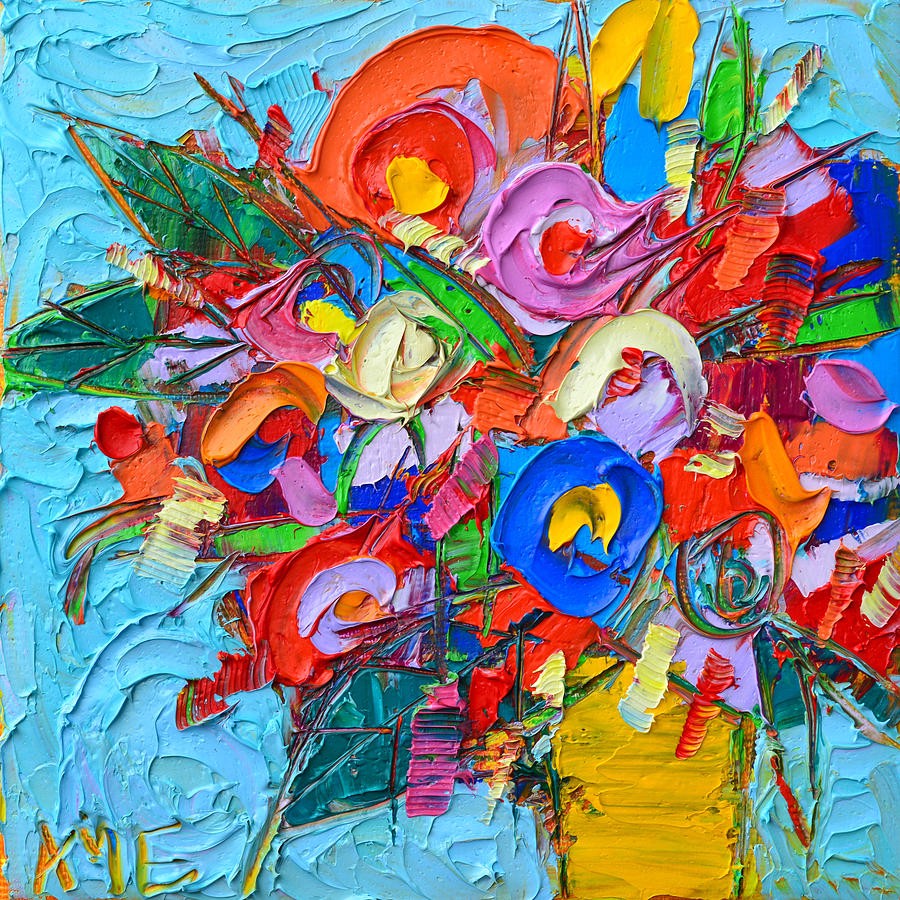 Summer Colours
Summer Colours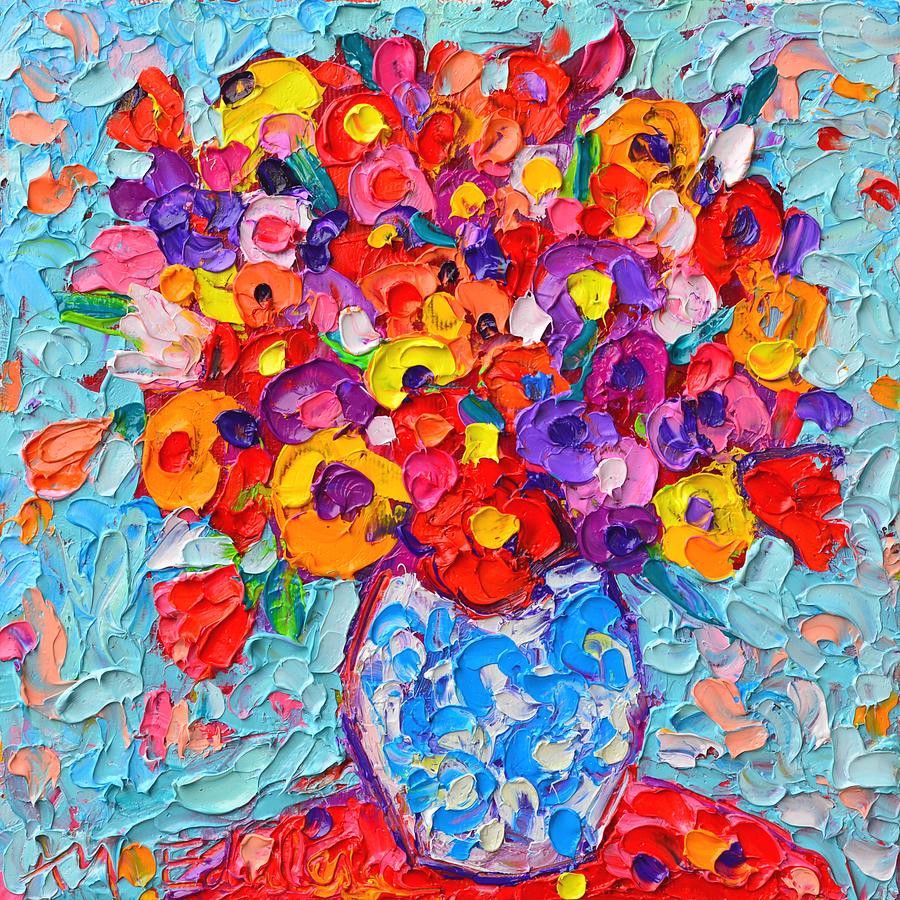 Take me home
Take me home
Famous Palette Knife Painting Artists:
Leonid Afremov (born 12 July 1955 in Vitebsk, Belarus) is a Russian?Israeli modern impressionistic artist who works mainly with a palette knife and oils. He developed his own unique technique and style which is unmistakable and cannot be confused with other artists. Afremov is mainly known as being a self-representing artist who promotes and sells his work exclusively over the internet with very little exhibitions and involvement of dealers and galleries.
Leonid Afremov was born on 12 July 1955 in Vitebsk, Belarus, then former USSR, to Jewish parents Bella Afremova and Arkadiy Afremov. His father was a shoe designer and shoemaker. His mother worked in a metal factory in Vitebsk. He was born in the same town as Marc Chagall, who later became a significant role model to Afremov.
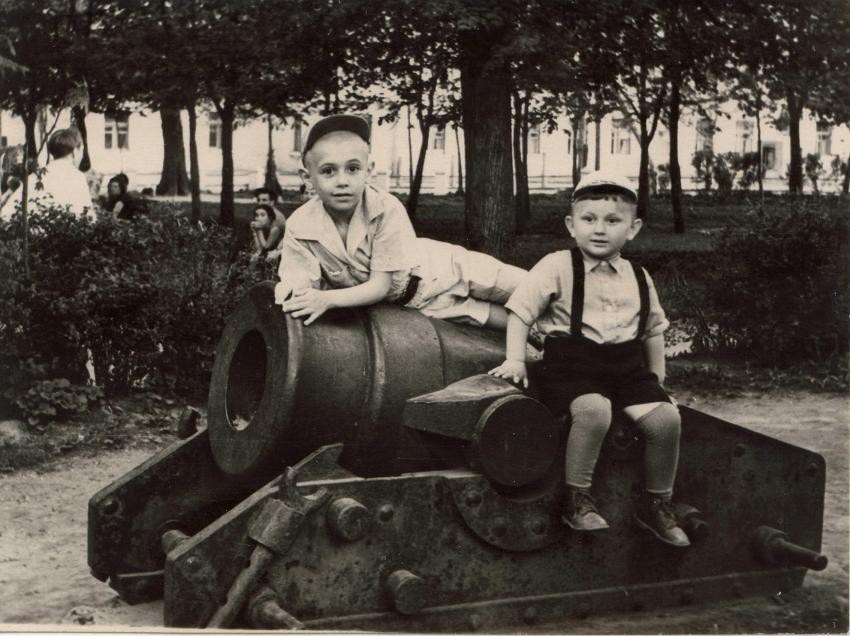 Leonid on the right side 1958.
Leonid on the right side 1958.
Afremov was raised in a traditional Jewish home. His parents and grandparents spoke Yidish at home. Despite government anti-semitism, the family practiced many Jewish traditions and risked imprisonment for practicing their religion and speaking their language. Their birth certificates and government IDs stated their nationality as Jewish.
Afremov was a good student in school and was interested in history and art. He attended all the possible art classes offered in school and took private lessons from local artists. Leonid?s parents noticed his talent for painting at an early age and encouraged him to develop his talents. At the age of 14 Leonid was exposed to extreme cold which resulted in kidney damage. Later in life the kidney damage resulted in hypertension which he still struggles with to this day.
In 1973 Leonid Afremov graduated with honor from high school in Vitebsk and was admitted to the Vitebsk Education Institute where he studied in the arts and graphics department. During his years in college, Afremov was introduced to the work of March Chagall, Picasso, Dali, Modigliani and the 19th century French Impressionism. His early artistic work was very influenced by Chagall and Modigliani. During his years in college, Afremov participated in various school exhibitions and even sold some paintings. In 1978 Afremov graduated from the Vitebsk Art School as one of their elite members. After that he took private lessons from local famous artist Barowski who was teaching art when Marc Chagall was still living in Vitebsk.
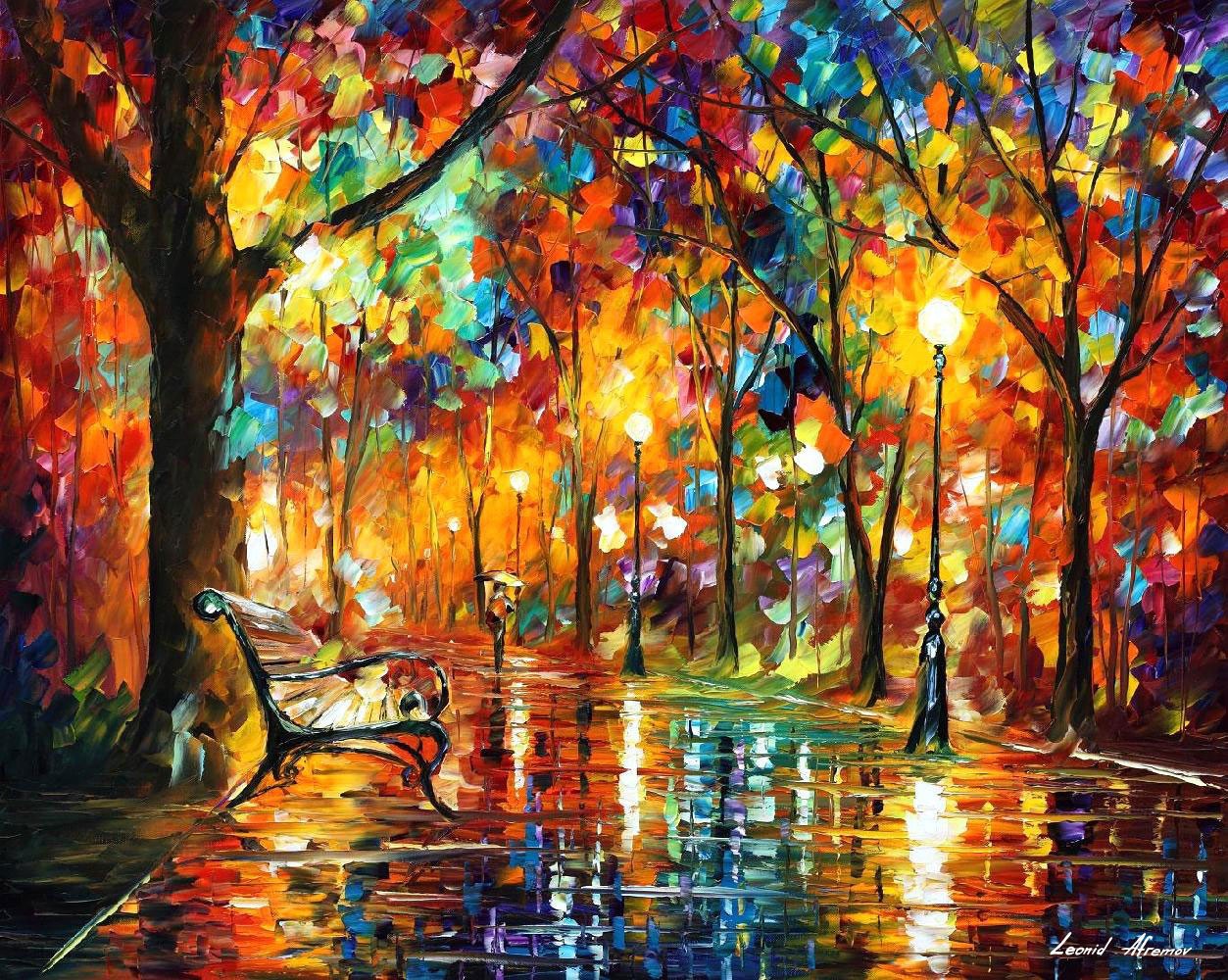 Oil on canvas
Oil on canvas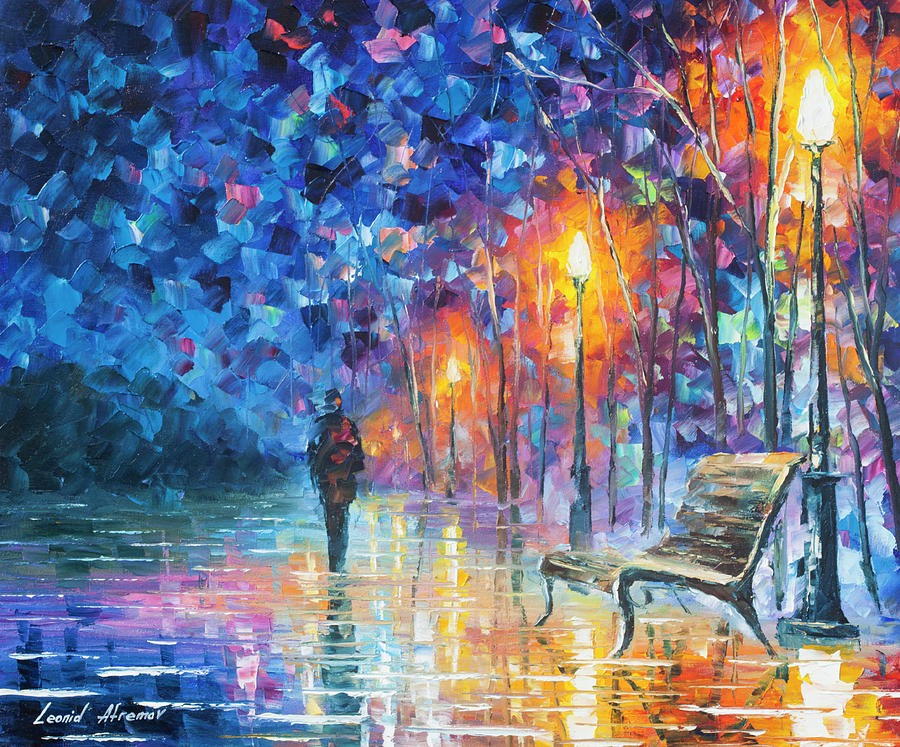 Night Walk
Night Walk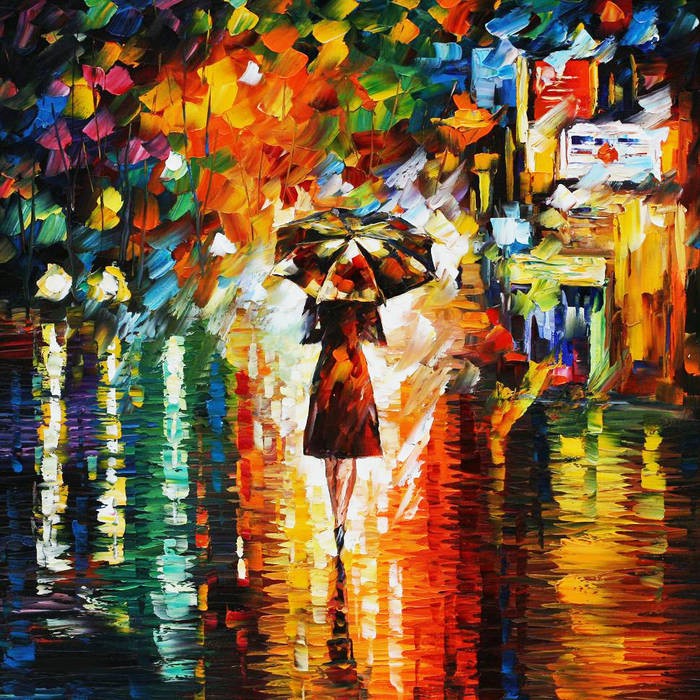 Rainfall
Rainfall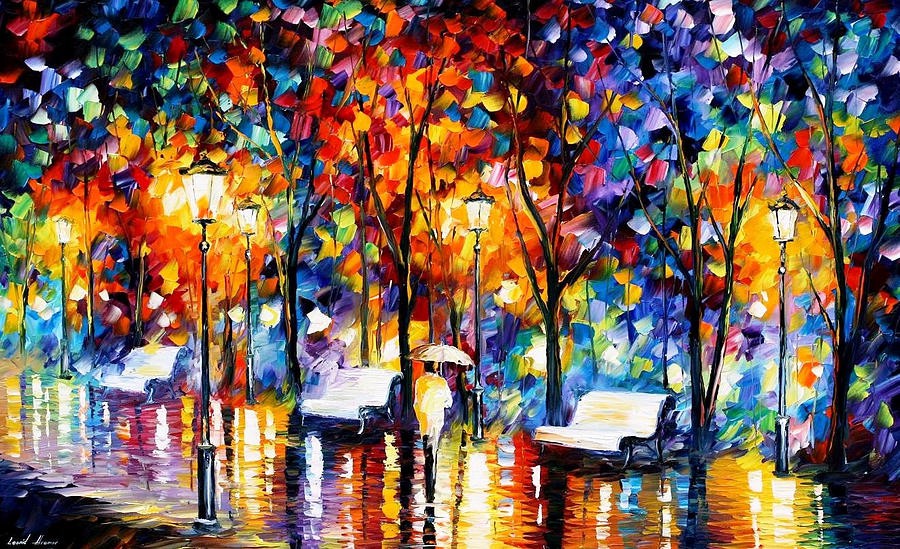 Night in Copenhagen
Night in Copenhagen
The author of this post, Divya Ramachandran is an Artist and Writer. She has Masters in Design from Milan and teaches art to kids during the week. She works on creative projects during her free time and loves collaborating with different artists.
You can get in touch with her at [email protected] or follow her on instagram @happy_divya.
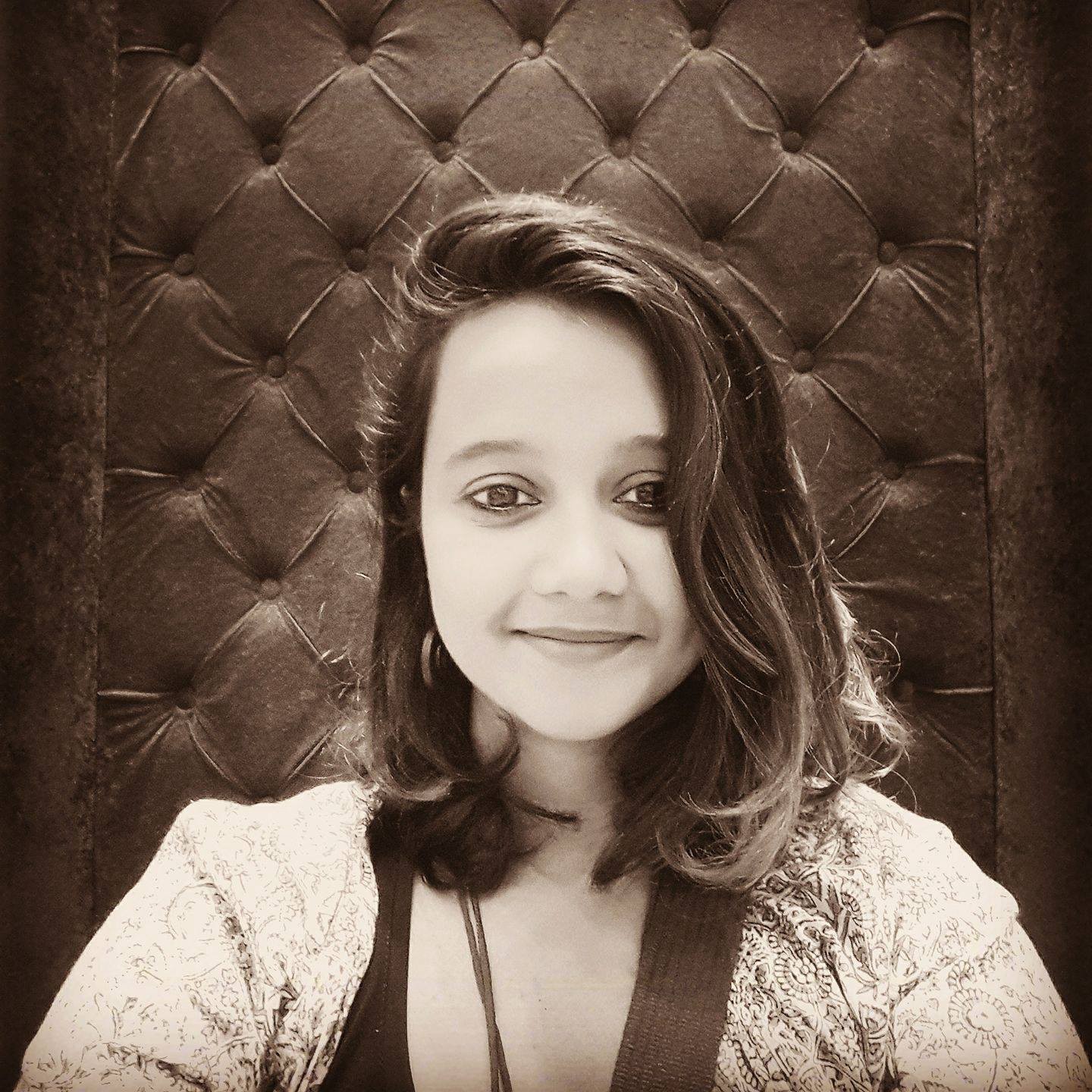 Comfy Couch
Comfy Couch
